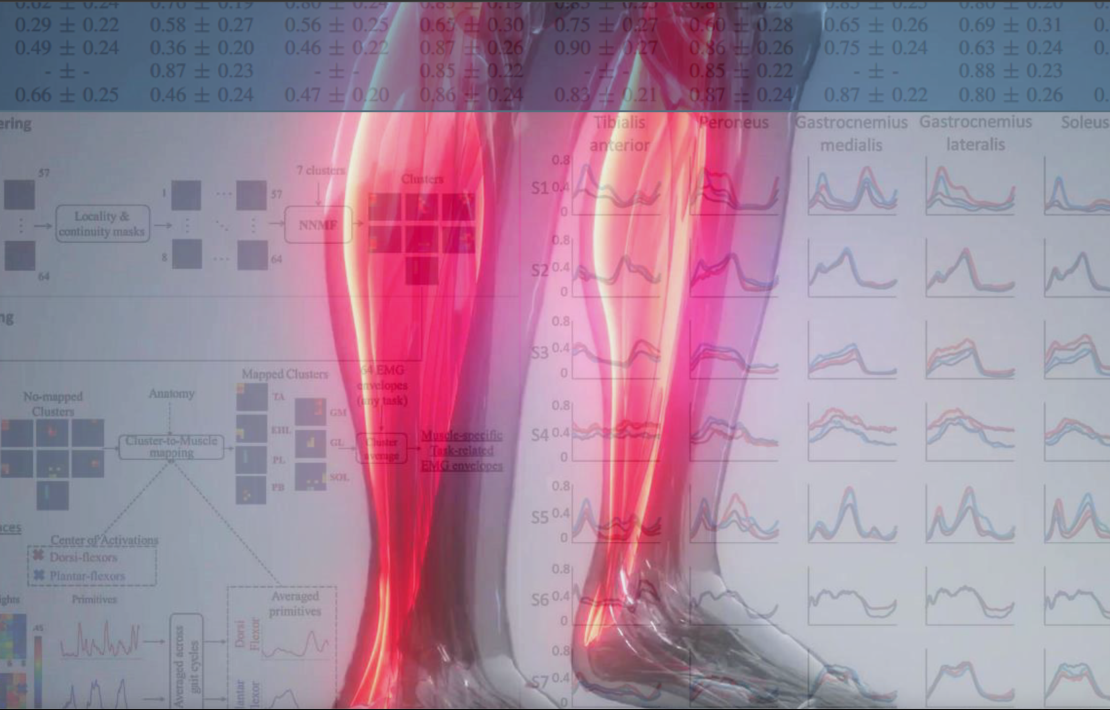
MyoStride: Development and demonstration of user-friendly, affordable and reliable High Density Electromyography (HD-EMG) - driven musculoskeletal modeling paradigm for estimating muscle function during rehabilitation processes.
In the Netherlands, 265,000 patients suffer every year from neurological or neuromuscular disorders, such as a stroke, spinal cord injuries or cerebral palsy. These conditions have a major impact on mobility due to, among other things, reduced muscle functions in the lower leg. Rehabilitation therefore focuses mainly on restoring these muscle functions and preventing further deterioration. However, the precise effectiveness of treatment cannot be properly measured. Practitioners can only rely on their observations, but have no insight into the activity of muscle groups. This leads to suboptimal and inefficient care. As a result, rehabilitation often takes longer than necessary and recovery is not optimal. The consortium wants to change this with the development of a wearable device to measure the activity of the muscle groups in the lower leg during rehabilitation. The basis for this is a prototype technology of a 'smart sock': the MyoStride. This was developed by TMSi, the Sint Maartenskliniek and the University of Twente in a previous ERDF project into a validated prototype at TRL level 5. They want to further develop and demonstrate this technology in this project, together with Moveshelf. The goal is to realize a new prototype that is, among other things, completely wireless, can be automatically calibrated and is integrated with the practitioner's IT systems. The developments are taking place in phases in the R&D departments of the SMEs involved and are tested in a practical setting in the Sint Maartenskliniek. In the first phase, the emphasis is on collecting additional data on the use of the technology in patients with a stroke, spinal cord injury, cerebral palsy or muscle disease. The developers use this data to improve the technology and test its suitability for these different patient groups. In the second phase, the new MyoStride will be used in at least 50 patients from these groups. The intended result is a proven and scalable technology, ready for medical certification. The intended technology makes it possible to accurately monitor the muscle activity of patients during a rehabilitation process in both rehabilitation clinics and physiotherapy practices. This gives the practitioners concrete insight into (the lack of) progress, so that they can adjust the treatments accordingly. Moreover, this ensures a much better transfer of data between the clinic and the physiotherapist. It is expected that the technology can prevent approximately 500,000 rehabilitation treatments annually and help save €20 million in healthcare costs.
